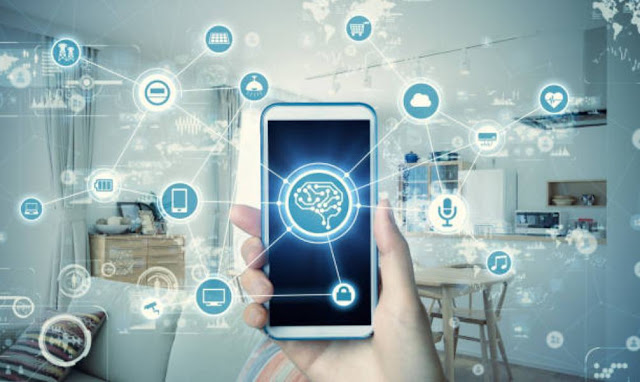Featured
- Get link
- X
- Other Apps
Transforming Healthcare and Beauty

Transforming Healthcare and Beauty: The Synergy of AI and IoT Devices
The fusion of Artificial Intelligence (AI) with Internet of
Things (IoT) devices has catalyzed a paradigm shift in the healthcare and
beauty industries. This dynamic synergy enhances patient care and well-being
and introduces innovative solutions in beauty and self-care. The convergence of
AI and IoT creates a robust ecosystem that leverages data-driven insights to
revolutionize personalized treatments, enhance user experiences, and promote
holistic health and beauty.
Integrating AI into IoT devices offers a range of
transformative possibilities in healthcare. IoT devices, such as wearable
fitness trackers and remote monitoring tools, continuously gather
health-related data, including heart rate, activity level, and sleep patterns.
AI algorithms can analyze this data in real time, identifying trends and
anomalies that might indicate potential health issues. These insights enable
early detection and intervention, leading to more proactive and personalized
healthcare.
For instance, AI-powered wearable devices can help individuals
manage chronic conditions like diabetes. These devices can monitor blood
glucose levels, analyze dietary patterns, and suggest personalized meal plans.
By continuously adapting to an individual's changing needs, these IoT devices
with AI capabilities promote better disease management and improved quality of
life.
Moreover, AI-enhanced IoT devices aid in medication
adherence. Intelligent pill dispensers equipped with AI can remind patients to
take their medications, monitor their dedication, and adjust dosages based on
real-time physiological data. This ensures proper treatment and empowers
patients to engage in their healthcare journey actively.
In beauty and self-care, AI-powered IoT devices offer
innovative solutions that cater to individual preferences and needs. Smart
skincare devices equipped with AI can analyze the user's skin condition and
recommend personalized skincare routines. These devices consider the weather,
pollution, and hormonal changes, creating a tailored regimen that enhances skin
health and appearance.
Furthermore, AI-enhanced beauty devices can revolutionize
cosmetic treatments. For instance, dermal fillers and Botox injections can be
guided by AI algorithms that analyze facial features and recommend precise
injection points. This data-driven approach optimizes the outcomes of cosmetic
procedures, ensuring natural-looking results that align with the patient's
desired aesthetic.
However, this integration of AI and IoT devices presents
challenges that must be addressed. Data privacy and security are paramount,
especially when dealing with sensitive health and beauty information. Ensuring user
data is encrypted, anonymized, and compliant with relevant regulations is
crucial to maintaining user trust.
Interoperability is another challenge. AI-powered IoT
devices often come from different manufacturers and may not communicate
seamlessly with each other. Establishing standards and protocols that enable
these devices to share and exchange data securely is essential to creating a
cohesive ecosystem.
Ethical considerations arise in AI and IoT in healthcare and beauty. The decisions made by AI algorithms should be transparent and explainable to healthcare professionals and users. Maintaining a balance between AI's insights and medical professionals' autonomy ensures that the human touch remains central to decision-making.
Moreover, the digital divide is a concern, as not everyone can
access advanced IoT devices or the technological literacy to use them
effectively. Ensuring equitable access to AI-enhanced healthcare and beauty
solutions is a challenge that requires collaboration among policymakers,
healthcare providers, and technology manufacturers.
In the beauty industry, fostering realistic expectations is
essential. While AI can simulate potential outcomes of cosmetic procedures, individuals
need to understand that actual results may vary. Educating users about the
limitations and possibilities of AI-enhanced beauty experiences is crucial to
avoiding unrealistic expectations.
In conclusion, the convergence of AI and IoT devices marks a
transformative chapter in healthcare and beauty. This dynamic synergy leverages
data-driven insights to provide personalized treatments, optimize patient care,
and enhance user experiences. Overcoming challenges related to data security,
interoperability, ethics, and accessibility will be essential to fully
realizing the potential of AI-powered IoT devices in these domains. By
addressing these challenges, we can pave the way for a future where technology
seamlessly integrates with human well-being and beauty aspirations, enriching
both industries for the betterment of individuals worldwide.
- Get link
- X
- Other Apps
Popular Posts
What is Medical Monitoring and Chronic Disease Management?
- Get link
- X
- Other Apps

Comments
Post a Comment